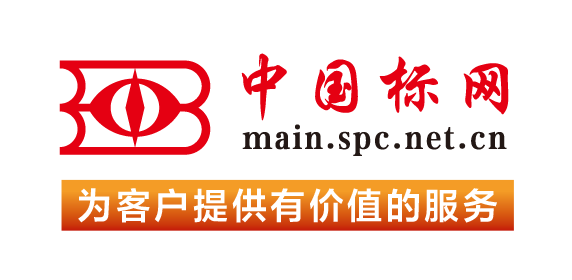【国外标准】 Standard Test Method for Resistance to Environmental Degradation of Electrical Pressure Connections Involving Aluminum and Intended for Residential Applications
本网站 发布时间:
2024-02-28
开通会员免费在线看70000余条国内标准,赠送文本下载次数,单本最低仅合13.3元!还可享标准出版进度查询、定制跟踪推送、标准查新等超多特权!
查看详情>>
适用范围:
5.1 The principal underlying the test is the sensitivity of the electrical contact interface to temperature and humidity cycling that electrical pressure connection systems experience as a result of usage and installation environment. The temperature cycling may cause micromotion at the mating electrical contact surfaces which can expose fresh metal to the local ambient atmosphere. The humidity exposure is known to facilitate corrosion on freshly exposed metal surfaces. Thus, for those connection systems that do not maintain stable metal-to-metal contact surfaces under the condition of thermal cycling and humidity exposure, repeated sequences of these exposures lead to degradation of the contacting surface indicated by potential drop increase.5.2 The test is of short duration relative to the expected life of connections in residential usage. Stability of connection resistance implies resistance to deterioration due to environmental conditions encountered in residential service. Increasing connection resistance as a result of the test exposure indicates deterioration of electrical contact interfaces. Assurance of long term reliability and safety of connection types that deteriorate requires further evaluation for specific specified environments and applications.5.3 Use—It is recommended that this test method be used in one of two ways. First, it may be used to evaluate and report the performance of a particular connection system. For such use, it is appropriate to report the results in a summary (or tabular) format such as shown in Section 17, together with the statement “The results shown in the summary (or table) were obtained for (insert description of connection) when tested in accordance with Test Method B812. Second, it may be used as the basis for specification of acceptability of product. For this use, the minimum test time and the maximum allowable increase in potential drop must be established by the specifier. Specification of connection systems in accordance with this use of the standard test method would be of the form: “The maximum potential drop increase for any connection, when tested in accordance with Test Method B812 for a period of weeks, shall be mV relative to the reference connections.” Connection systems that are most resistant to thermal-cycle/humidity deterioration, within the limitations of determination by this test method, show no increase in potential drop, relative to the reference connections, when tested for indefinite time. Connections that are less resistant to thermal-cycle/humidity conditions applied by this test will demonstrate progressive increases in potential drop with increasing time on test. Thus, the following examples of specifications are in the order of most stringent (No. 1) to least stringent (No. 3). Duration, weeks Maximum Potential Drop Increase, mV1. 52 02. 16 0.23. 4 1.01.1 This test method covers all residential pressure connection systems. Detailed examples of application to specific types of connection systems, set-screw neutral bus connectors and twist-on wire-splicing connectors, are provided in Appendix X1 and Appendix X2.1.2 The purpose of this test method is to evaluate the performance of residential electrical pressure connection systems under conditions of cyclic temperature change (within rating) and high humidity.1.3 The limitations of the test method are as follows:1.3.1 This test method shall not be considered to confirm a specific lifetime in application environments.1.3.2 The applicability of this test method is limited to pressure connection systems rated at or below 600 V d-c or a-c RMS.1.3.3 This test method is limited to temperature and water vapor exposure in addition to electrical current as required to measure connection resistance.1.3.4 This test method does not evaluate degradation which may occur in residential applications due to exposure of the electrical connection system to additional environmental constituents such as (but not limited to) the following examples:1.3.4.1 Household chemicals (liquid or gaseous) such as ammonia, bleach, or other cleaning agents.1.3.4.2 Chemicals as may occur due to normal hobby or professional activities such as photography, painting, sculpture, or similar activities.1.3.4.3 Environments encountered during construction or remodeling such as direct exposure to rain, uncured wet concrete, welding or soldering fluxes and other agents.1.3.5 This test method is limited to evaluation of pressure connection systems.1.4 This standard does not purport to address all of the safety concerns, if any, associated with its use. It is the responsibility of the user of this standard to become familiar with all hazards including those identified in the appropriate Safety Data Sheet (SDS) for this product/material as provided by the manufacturer, to establish appropriate safety, health, and environmental practices, and determine the applicability of regulatory limitations prior to use.1.5 This standard should be used to measure and describe the properties of materials, products, or assemblies in response to electrical current flow under controlled laboratory conditions and should not be used to describe or appraise the fire hazard or fire risk of materials, products, or assemblies under actual installation conditions or under actual fire conditions. However, results of this test may be used as elements of a fire risk assessment which takes into account all of the factors which are pertinent to an assessment of the fire hazard of a particular end use.1.6 This international standard was developed in accordance with internationally recognized principles on standardization established in the Decision on Principles for the Development of International Standards, Guides and Recommendations issued by the World Trade Organization Technical Barriers to Trade (TBT) Committee.
标准号:
ASTM B812-18
标准名称:
Standard Test Method for Resistance to Environmental Degradation of Electrical Pressure Connections Involving Aluminum and Intended for Residential Applications
英文名称:
Standard Test Method for Resistance to Environmental Degradation of Electrical Pressure Connections Involving Aluminum and Intended for Residential Applications标准状态:
Active-
发布日期:
-
实施日期:
出版语种:
- 推荐标准
- ASTM 51401-21 Standard Practice for Use of a Dichromate Dosimetry System
- ASTM 51956-21 Standard Practice for Use of a Thermoluminescence-Dosimetry System (TLD System) for Radiation Processing
- ASTM A1010/A1010M-24 Standard Specification for Higher-Strength Martensitic Stainless Steel Plate, Sheet, and Strip
- ASTM A1016/A1016M-24 Standard Specification for General Requirements for Ferritic Alloy Steel, Austenitic Alloy Steel, and Stainless Steel Tubes
- ASTM A105/A105M-24 Standard Specification for Carbon Steel Forgings for Piping Applications
- ASTM A1064/A1064M-24 Standard Specification for Carbon-Steel Wire and Welded Wire Reinforcement, Plain and Deformed, for Concrete
- ASTM A108-24 Standard Specification for Steel Bar, Carbon and Alloy, Cold-Finished
- ASTM A1080/A1080M-24 Standard Practice for Hot Isostatic Pressing of Steel, Stainless Steel, and Related Alloy Castings
- ASTM A1090/A1090M-19(2024) Standard Specification for Forged Rings and Hollows for Use as Base Plates in Power Transmission Structures
- ASTM A1115/A1115M-24 Standard Practice for Construction of Mechanically Stabilized Earth Walls with Inextensible Soil Reinforcement
- ASTM A1128-24 Standard Specification for Stainless Steel Shielded, Rubber Gasketed Couplings Having an Integral Restraint Feature for Joining Hubless Cast Iron Soil Pipes and Fittings Where External Restraint Is Required
- ASTM A179/A179M-24 Standard Specification for Seamless Cold-Drawn Low-Carbon Steel Heat-Exchanger and Condenser Tubes
- ASTM A234/A234M-24 Standard Specification for Piping Fittings of Wrought Carbon Steel and Alloy Steel for Moderate and High Temperature Service
- ASTM A242/A242M-24 Standard Specification for High-Strength Low-Alloy Structural Steel
- ASTM A249/A249M-24a Standard Specification for Welded Austenitic Steel Boiler, Superheater, Heat-Exchanger, and Condenser Tubes
 我的标准
我的标准 购物车
购物车 400-168-0010
400-168-0010














